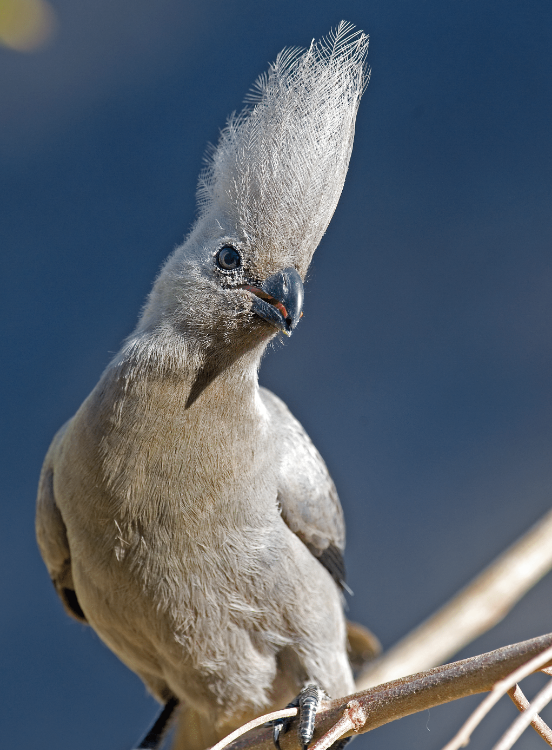Bird’s-eye view – water thick-knee
December 5, 2012Bird’s-eye view – Rüppell’s Korhaan
December 5, 2012By Pompie Burger
Black-faced Babbler – Turdoides melanops
Roberts No 131
These birds are one of Roy’s Camp’s claims to fame. There are quite a few others, but for the avid bird-watcher the Black-faced Babbler is probably the most important one.
I must admit that they (the birds not the Ottos) seem to know this, if you watch them move around the camp with their loud and very distinctive calls as they keep in touch with each other, and, for that matter, with the all-important bird-watchers and even more important, the bird photographer.
They definitely act and sound as if the whole camp belongs to them. They occur in small groups of four to seven, constantly looking for food.
They are often called Twelve Apostles and Seven Sisters because of their tendency to move around in small groups.
They feed on the ground, foraging under leaves for insects and small reptiles.
Their behaviour is very babbler-like, sitting together in a tree, preening and debugging each other. As one would expect, they love the terminalia and commiphora woodland so typical of this area just north of Grootfontein and from here further north, extending into southern Angola, almost being endemic birds with their relatively limited distribution. To the west they occur as far as the eastern side of Etosha. Interestingly, they do not overlap with the Bare-cheeked Babblers that occur from here further west.
They have quite strong legs and feet but are not very good flyers and thus, as one would expect, they spend more time on the ground than in the air. Their call is a typical trademark babbler nasal call, sounding like pa…pa…pa…, and jeu, jeu…, rising to, at times, an annoying crescendo. Their Afrikaans name Katlagter (laughing cat) does not really make sense to me, because I’ve never heard a cat laughing, but this might well be what cats would sound like if they were to have a giggle.
These babblers breed during December in a very thrush-like nest. At Roy’s Camp there is one just behind the restaurant area, so if this is one of the last birds you have to tick, just phone the Ottos.
About the author:
Based in Windhoek, Pompie Burger is an orthopaedic surgeon whose part-time passion is photography, in particular wildlife, and specifically birds. This regularly takes him to the most remote corners of the country, resulting in riveting images and articles.
Pompie is the author and photographer of the coffee table book Birds of Namibia, which was published in 2008. The book contains articles and photographs which attest to the insight and knowledge of an accomplished observer.
Read more of his articles in our Birding Section.
This article appeared in the Oct/Nov ‘10 edition of Travel News Namibia.


